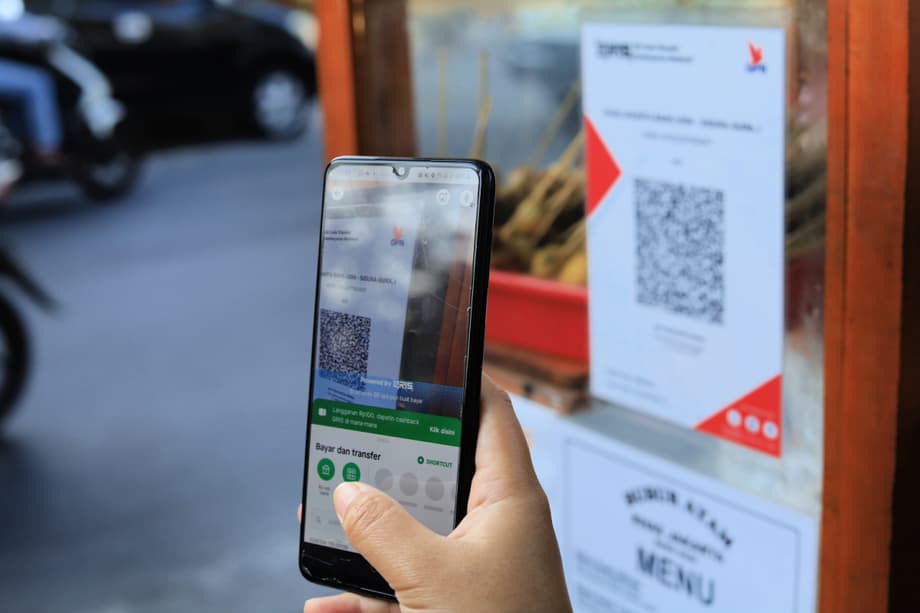A smoother way to pay in Bali takes off
Bank Indonesia has launched the Indonesia Tourist Travel Pack at I Gusti Ngurah Rai International Airport in Bali, a new service designed to make paying, connecting, and getting around far easier for international visitors. The pack combines a local SIM or eSIM with mobile data and a local number, a digital wallet that supports chip based electronic money, and hands on assistance at a new Tourism Information Center at the airport. It plugs travelers straight into QRIS, Indonesia’s nationwide QR code payment network, so they can scan and pay at hotels, cafes, shops, taxis, and attractions without cash.
- A smoother way to pay in Bali takes off
- Inside the Indonesia Tourist Travel Pack
- QRIS explained and where it works
- What changes for travelers day to day
- Tourism taxes and cashless pilots across the islands
- Why businesses say digital helps
- Rupiah redenomination plans and what they mean
- How to get started at the airport
- Key Points
The launch positions Bali as a pilot for a wider rollout across the country. It also aligns with a broader shift toward digital services in the island’s tourism sector, from cashless ticketing at popular sites to efforts to simplify how travelers pay mandatory levies. The move does not eliminate the need for cash in Bali, where many small vendors still prefer physical money, yet it gives tourists a reliable way to go cashless whenever a QR code or card terminal is present. For many, that means fewer ATM withdrawals, better budgeting in rupiah, and safer transactions in crowded places.
With the pack, newly arrived visitors can buy or activate local connectivity, set up a compliant payment account, and receive a QRIS guidebook that explains where and how to use digital payments across the island. The Tourism Information Center provides support in multiple languages and can point travelers to participating merchants, recommended routes, and transport options. This is a practical answer to a common pain point for visitors who discover that many Indonesian digital wallets require local registration. The new onboarding pathway helps foreign passport holders join the ecosystem in minutes, instead of navigating multiple apps after a long flight.
Inside the Indonesia Tourist Travel Pack
The initiative is built as a three part ecosystem: connectivity, a ready to use digital wallet that supports QR payments, and on the ground help. For tourists, the promise is convenience from the moment they clear immigration. The pack aims to reduce friction at the exact point where many travelers run into it, which is setting up a local phone number for apps and arranging a payment method that works across the island.
Connectivity, SIM and eSIM
Visitors can purchase or activate an Indonesian SIM or eSIM at the arrival area and leave the airport with working data and a local phone number. A local number makes it easier to register for transport, delivery, and attraction apps, and it allows hotels and tour providers to reach guests reliably. Staff at the Tourism Information Center can assist with device compatibility, plan selection, and activation steps so travelers are not troubleshooting alone.
Digital wallet and chip based electronic money
The pack includes access to a digital wallet that supports QRIS, the national QR standard. QRIS is interoperable, which means one QR code at a merchant can be paid by many participating wallets and bank apps. The wallet in the pack can be topped up and used immediately for QR payments across Indonesia. In practice, tourists scan a merchant’s QR code, confirm the amount, and pay in seconds. For those unfamiliar with Indonesian digital payment rules, staff can help complete identity checks using a passport and show how to top up. Top up options vary by provider and location, and can include card payments at counters or partner kiosks.
Airport help desk and QRIS guidebook
A new Tourism Information Center at the international arrivals level supports the rollout. There, tourists can collect or buy the pack, get the QRIS Nusantara Tourism Guidebook, and ask for help if a payment fails. The guidebook highlights where QRIS is already accepted across Bali, from accommodation and dining to retail and ticketed attractions. It also explains how to check a transaction history, how to request a refund if a payment is duplicated, and where to get help while on the island.
QRIS explained and where it works
QRIS, the Quick Response Code Indonesian Standard, is a nationwide system overseen by Bank Indonesia that uses a single QR format accepted by many banks and wallet providers. A shop only needs one QR to accept payments from a wide range of apps. Tourists open their wallet or banking app, choose scan, point the camera at the QR code, confirm the price, and tap pay. A success screen appears in the app, and the merchant receives confirmation on their device. This has become common at hotels, restaurants, convenience stores, spas, markets, beach clubs, and some taxis or tour operators. Many small businesses display a printed code on the counter, so travelers can pay without handing over a card.
Cross border QR codes for regional visitors
Indonesia is linking QRIS with similar systems in neighboring countries, which makes it possible for some foreign wallet users to pay in rupiah by scanning the local QR. The cross border network currently connects with Malaysia, Thailand, and Singapore, with expansion to other markets under discussion. Data from Bank Indonesia’s Riau Islands office show that from January to May 2025 Malaysian visitors made several thousand cross border QRIS transactions, followed by visitors from Singapore and Thailand. Younger travelers, who are more familiar with scanning to pay at home, tend to adopt the feature fastest. This is especially visible in border hubs and short break destinations.
For visitors whose home wallets are not yet connected, the Tourist Travel Pack bridges the gap. It gives access to an Indonesian wallet that works across QRIS, removes the language barrier during setup, and includes support if something goes wrong. Fees, if any, are usually applied by the visitor’s wallet provider in the case of cross border payments, and the exchange rate is set by that provider. With a local wallet, transactions occur in rupiah without foreign exchange at the moment of payment.
What changes for travelers day to day
The immediate change is that paying becomes easier in more places. Hotels and mid to large restaurants often accept cards and QRIS, so visitors can settle bills without visiting an ATM on arrival. Many ride services and some metered taxis accept QR codes tied to their app or a driver account, which cuts down on the need for cash. Souvenir shops, yoga studios, dive operators, and tour desks are also using QRIS, and that helps travelers keep a clean digital record of their spending. For purchases where a QR code is displayed, there is no need to ask about card network acceptance or tap limits.
Do you still need cash
Yes, travelers should still carry some rupiah. Small family run warungs, roadside stalls, beach shacks, temple gates, parking attendants, and some rural attractions prefer cash. Tipping is not compulsory, yet service tips are welcomed and small notes make that easy. ATMs are widely available in Bali, and international cards on networks like Visa and Mastercard generally work, although machine fees can vary. Contactless card payments are growing, including at many chains and cafes, but limits per tap can apply and not every terminal supports tap. Apple Pay and Google Pay are not officially available in Indonesia. Having a mix of cash, a physical card, and a QR capable wallet gives the most flexibility.
Tourists who plan to drive should note that some tolls and parking facilities use specific stored value cards or accept QR at designated points. For temple donations and small community fees, cash is often the fastest method. The new Tourist Travel Pack does not replace every cash need, yet it reduces the number of times visitors must find a working ATM or carry large amounts of money during busy days out.
Tourism taxes and cashless pilots across the islands
Bali introduced a provincial tourism levy of 150,000 rupiah per international visitor in 2024. Authorities are working on changes that would make the payment process more straightforward, including integration with immigration systems and more payment points on the island. Industry groups are collaborating with the provincial government so travel agencies can accept and process the levy on behalf of their clients, which could raise compliance. Early compliance rates were well below targets, so making payment easier is a priority for officials and tourism operators.
Specific destinations near Bali are also moving to cashless collection for local fees. The Klungkung Regency, which oversees the Nusa Islands, has committed to digital payment for retribution and entry tickets. Visitors to Nusa Penida, Nusa Lembongan, and Nusa Ceningan pay a tourist retribution fee of 25,000 rupiah for adults and 15,000 rupiah for children, with card payment required at official counters. Marine activities inside the Nusa Penida Marine Protected Area carry an additional fee for international visitors. Local leaders say digitizing these payments helps close revenue leakages, improves transparency, and signals a more professional experience for guests.
Why businesses say digital helps
For businesses, QRIS reduces the cost and complexity of accepting non cash payments. A printed QR on the counter is enough for a stall or small shop to take payments from many different apps. There is no need for a dedicated terminal that can be expensive or prone to signal dropouts. Digital records help with reconciliation, make it harder for funds to go missing, and speed up closing at the end of day. For larger merchants, digital payments reduce the security risk of holding cash, and staff can serve customers faster at peak times.
Local governments highlight another benefit: transparent collection of fees and levies. When fees are paid digitally, collection systems can monitor volumes in real time. That makes it easier to plan public works, verify that revenue is reaching the right budget lines, and build trust with communities that depend on tourism. For visitors, the experience is faster and more consistent, especially at popular sites where queues grow long and cash handling slows entry.
Safety, support, and reliability
Digital transactions travel through licensed banks and payment service providers. Consumers see a confirmation screen in the app after paying and can show it to the merchant if needed. Tourists should still take basic precautions. Use a wallet or banking app from a reputable provider, set strong device security, and keep the phone charged with a power bank for long days out. If a payment fails or is duplicated, the Tourism Information Center at the airport can guide visitors through contacting the right support channel.
Research on travel tech in Bali has found that around the clock customer support has the greatest positive effect on tourist satisfaction, with digital payments also contributing strongly to a smoother trip. That supports the design of the Tourist Travel Pack, which pairs payment capability with in person assistance at the point of arrival.
Rupiah redenomination plans and what they mean
Indonesia has discussed redenominating the rupiah by removing three zeros from prices and banknotes. Redenomination is a unit simplification, not a devaluation, so the real value of goods and services would not change. Timelines have not been set, and any shift would be gradual and well signposted. Travelers today should plan and budget in existing rupiah units, and the Tourist Travel Pack and QRIS will continue to operate within the current system.
How to get started at the airport
Arriving travelers who want to use the new system can move through setup quickly with a few simple steps. The process is designed for foreign passport holders and takes place inside the international arrivals area before exiting to ground transport.
- Look for the Tourism Information Center signs in the arrivals hall at I Gusti Ngurah Rai International Airport.
- Present your passport and choose a SIM or eSIM plan that suits your stay. Staff can check device compatibility and install an eSIM if your phone supports it.
- Open or create the digital wallet included in the pack. Complete any identity checks guided by staff so the wallet is ready for QRIS payments.
- Top up your wallet. Depending on the counter, you may be able to top up with a card or at partner kiosks. Ask for a receipt and check your new balance in the app.
- Take the QRIS Nusantara Tourism Guidebook, which lists common use cases and gives practical tips for dining, transport, attractions, and shopping.
- Test a small purchase at an airport merchant or kiosk that accepts QRIS. Practice scanning a code and confirming a payment.
- Keep a backup payment method and a small amount of cash for places that do not accept QR or cards. Store support contacts from the guidebook in your phone.
- Turn on mobile data roaming only if you need it. With a local SIM or eSIM, most travelers can keep roaming off and avoid extra fees.
If your home wallet is connected to Indonesia through a cross border QR partnership, you can use it where the merchant displays a QRIS code. For everyone else, the local wallet included in the pack provides broad coverage in Bali and across Indonesia. In either case, check your app notifications for payment confirmations and save screenshots for high value transactions.
Key Points
- Bank Indonesia launched the Indonesia Tourist Travel Pack at Bali’s international airport to make digital payments easy for foreign visitors.
- The pack combines a local SIM or eSIM, a ready to use digital wallet for QRIS payments, and in person support at a Tourism Information Center.
- QRIS is a single QR standard accepted by many Indonesian wallets and bank apps, used at hotels, restaurants, shops, taxis, and attractions.
- Cross border QR connections already link Indonesia with Malaysia, Thailand, and Singapore, with more destinations planned.
- Cash is still useful in Bali, especially for small vendors, tips, temple gates, parking, and rural attractions.
- Bali’s 150,000 rupiah tourism levy is being streamlined, and nearby Nusa Islands have shifted to cashless collection for local fees.
- Digital payments help businesses reduce cash handling, improve transparency, and speed up service at busy periods.
- A recent study in Bali found that 24/7 support and digital payments both raise tourist satisfaction, backing the pack’s service based design.
- Redenomination of the rupiah is a long term discussion and would not change the real value of prices; travelers should continue using current rupiah units.
- For a quick start, set up the pack at the airport, top up the wallet, keep a backup card and some cash, and look for QRIS signs at merchants across the island.












